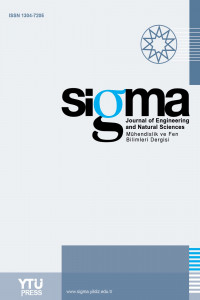Abstract
Organizations have to pay attention on increasing customer expectations in a competitive environment. While product variety is increasing, in parallel product life cycles are decreasing. Customers also expect custom features on products. To handle with all these compelling challenges; organizations try to guarantee that every action taken on operational and tactical levels are just for strategic goals. Influence on total product cost at early design phase is another way of coping. Strategic planning and integrated product and process design and development issues are considered together in this paper. A road map is developed which begins from generation of strategic goals and ends with selection of alternative concept design phase. Finally first part of this road map is implemented for a retail organization.
References
- [1] E. Andajani, “Understanding Customer Experience Management in Retailing,” Procedia - Soc. Behav. Sci., vol. 211, no. September, pp. 629–633, 2015.
- [2] D. Grewal, M. Levy, and V. Kumar, “Customer Experience Management in Retailing: An Organizing Framework,” J. Retail., vol. 85, no. 1, pp. 1–14, 2009.
- [3] G. Migliano and E. Pantano, “Apparel: Improving the quality of technology-based innovations selection: a quality function deployment approach for retailers,” Int. J. Bus. Perform. Manag., vol. 16, no. 2/3, p. 352, 2015.
- [4] J. Hinckeldeyn, R. Dekkers, N. Altfeld, and J. Kreutzfeldt, “Expanding bottleneck management from manufacturing to product design and engineering processes,” Comput. Ind. Eng., Sep. 2013.
- [5] E. B. Magrab, S. K. Gupta, F. P. Mccluskey, P. A. Sandborn, and F. Group, Integrated Product and Process Design and Development The Product Realization Process. 2010.
- [6] B. J. Witcher, V. S. Chau, and P. Harding, “Dynamic Capabilities: Top Executive Audits and Hoshin Kanri at Nissan South Africa,” Int. J. Oper. Prod. Manag., vol. 28, no. 6, pp. 540–561, 2008.
- [7] C. Tennant and P. Roberts, “Hoshin Kanri: Implementing the catchball process,” Long Range Plann., vol. 34, pp. 287–308, 2001.
- [8] J. K. Jolayemi, “Hoshin kanri and hoshin process: A review and literature survey,” Total Qual. Manag. Bus. Excell., vol. 19, no. 3, pp. 295–320, 2008.
- [9] Y. Akao, Hoshin Kanri, Yönetim Pusulası. MESS, 1999.
- [10] J. Nicholas, “Hoshin kanri and critical success factors in quality management and lean production,” Total Qual. Manag. Bus. Excell., vol. 3363, no. April, pp. 1–15, 2014.
- [11] E. Andrés-López, I. González-Requena, and A. Sanz-Lobera, “Lean Service: Reassessment of Lean Manufacturing for Service Activities,” Procedia Eng., vol. 132, pp. 23–30, 2015.
- [12] U. Dombrowski and T. Mielke, “Lean leadership -15 rules for a sustainable lean implementation,” Procedia CIRP, vol. 17, pp. 565–570, 2014.
- [13] U. Dombrowski and T. Mielke, “Lean Leadership - Fundamental principles and their application,” Procedia CIRP, vol. 7, pp. 569–574, 2013.
- [14] B. Witcher and R. Butterworth, “Hoshin Kanri: How Xerox Manages,” Long Range Plann., vol. 32, no. 3, pp. 323–332, 1999.
- [15] E. A. Cudnev, “Using Hoshin Kanri to Improve the Value Stream.” 2009.
- [16] D. K. Gauri, M. Trivedi, and D. Grewal, “Understanding the Determinants of Retail Strategy: An Empirical Analysis,” J. Retail., vol. 84, no. 3, pp. 256–267, 2008.
- [17] C.-T. Su and T.-M. Yang, “Hoshin Kanri planning process in human resource management: recruitment in a high-tech firm,” Total Qual. Manag. Bus. Excell., vol. 26, no. 1–2, pp. 140–156, 2013.
- [18] J. Villalba Diez, J. Ordieres-Mere, and G. Nuber, “The HOSHIN KANRI TREE. Cross-Plan Lean Shopfloor Management,” 5th Conf. Learn. Factories 2015, vol. 32, no. Clf, pp. 150–155, 2015.
- [19] P. Masai, P. Parrend, and C. Zanni-Merk, “Towards a formal model of the lean enterprise,” Procedia Comput. Sci., vol. 60, no. 1, pp. 226–235, 2015.
- [20] P. Jiménez, J. Villalba, and J. Ordieres-Mere, “HOSHIN KANRI visualization with Neo4j . Empowering Leaders to operationalize Lean Structural Networks,” Procedia CIRP, vol. 55, pp. 284–289, 2016.
- [21] K. F. Pun, C. K.S., and H. Lau, “A QFD / hoshin approach for service quality deployment : a case study,” Manag. Serv. Qual. An Int. J., vol. 10, no. 3, pp. 156–170, 2006.
- [22] J. K. Jolayemi, “Policy deployment: A review and comparisons of two best practices models,” Total Qual. Manag. Bus. Excell., vol. 20, no. 8, pp. 877–902, 2009.
- [23] S.-G. Toma and P. Marinescu, “Global Strategy: the Case of Nissan Motor Company,” Procedia Econ. Financ., vol. 6, no. 13, pp. 418–423, 2013.
- [24] R. Dekkers, “Strategic capacity management: meeting technological demands and performance criteria,” J. Mater. Process. Technol., vol. 139, no. 1–3, pp. 385–393, Aug. 2003.
- [25] S. Tüfekçi, “Bütünleşik Ürün Süreç Tasarımında Proje Yönetimi,” in Proje Yönetimi Kongresi, Değişimin ve Geleceğin Yönetimi, 1999.
- [26] H. Sehested, Claus; Sonnenberg, Lean Innovation: A Fast Path From Knowledge To Value 2010. Springer, 2011.
- [27] F. Jariri and S. H. Zegordi, “Quality Function Deployment , Value Engineering and Target Costing , an Integrated Framework in Design Cost Management : A Mathematical Programming Approach,” Sci. Iran., vol. 15, no. 3, pp. 405–411, 2008.
- [28] “www.migroskurumsal.com,” 2016. [Online]. Available: http://www.migroskurumsal.com/en/Icerik.aspx?IcerikID=229. [Accessed: 20-May-2016].
Details
| Primary Language | English |
|---|---|
| Subjects | Engineering |
| Journal Section | Research Articles |
| Authors | |
| Publication Date | December 1, 2016 |
| Submission Date | June 23, 2016 |
| Published in Issue | Year 2016 Volume: 34 Issue: 4 |
IMPORTANT NOTE: JOURNAL SUBMISSION LINK https://eds.yildiz.edu.tr/sigma/


